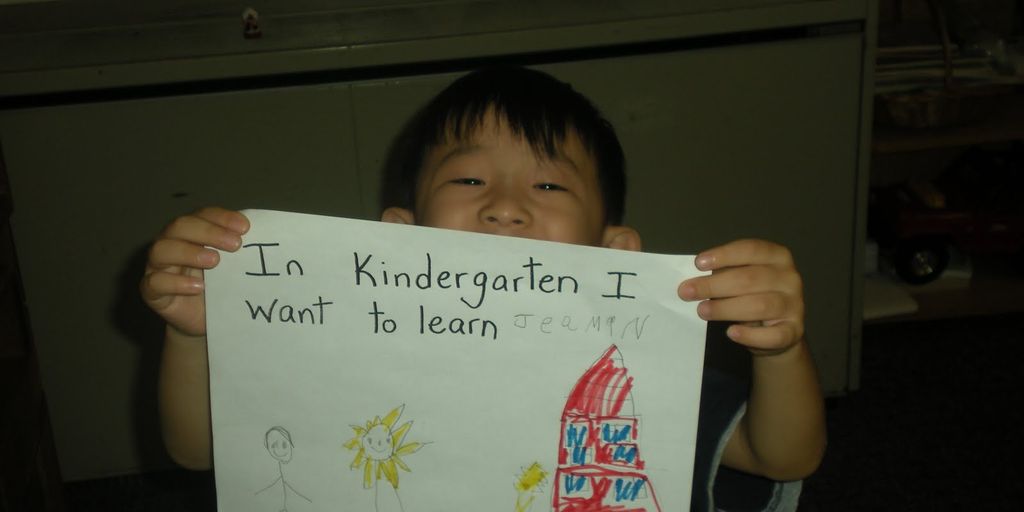
Learning doesn’t have to be confined to the classroom. As a parent, you have the unique opportunity to turn everyday moments into educational experiences. By incorporating fun and engaging activities into your child’s routine, you can foster a love for learning that lasts a lifetime. Here are the top 10 educational activities to boost your child’s learning at home.
Key Takeaways
- Scavenger hunts can make learning interactive and fun.
- Phonics basics help in developing reading skills.
- Writing practice enhances literacy and communication.
- Color identification aids in cognitive development.
- Counting skills are fundamental for mathematical understanding.
1. Scavenger Hunt
A scavenger hunt is a fantastic way to combine fun and learning. Children can explore their surroundings while developing critical thinking and problem-solving skills. You can create a scavenger hunt in various settings, such as your living room, backyard, or even the neighborhood. Here are some ideas to get you started:
- Backyard Treasure Hunt: Hide a treasure in the backyard and have the kids use a map to find it. It’s even better if they can hide something from you and draw the map themselves.
- Egg Hunt: You don’t need an Easter bunny to have an egg hunt! Have your kids hide a designated number of plastic eggs, and then time each other to see how fast they can find them. You can even put small prizes or stickers inside.
- Painted Rocks: An easy way to add a little sunshine to someone’s day is to paint rocks and leave them for others to find. Have your kids paint while you work or study, then set them out or leave them on your neighbors’ doorsteps the next time you head out for a walk.
A scavenger hunt not only keeps children engaged but also encourages them to be observant and curious about their environment.
2. Phonics Basics
One of the most valuable gifts you can offer your child is the ability to read. Children are better equipped to spell and read when they learn the fundamentals of phonics, which is the concept that specific letters produce particular sounds.
Try engaging in phonics learning activities that turn into an adventure rather than a boring lesson. Kids may use a digital camera, play games, look for letters, create alphabet books, and more to make their phonics teachings come to life.
The child may play a letter game, where the teacher or parent would make a letter sound and the child has to find that letter. With each right answer, the child would be rewarded with points.
Teaching phonics helps students identify the underlying sounds as they read and spell words, which helps them understand how words are formed and constructed.
3. Writing Practice
Writing is a fundamental skill that children will use throughout their lives. To make writing more engaging, try using techniques beyond just pencil and paper. For instance, you can have them connect the dots to learn new alphabets or create letters out of play-doh or shaving cream. They’ll have fun while learning.
For younger children, assist them in learning the alphabet and the sounds that each letter makes. This foundational knowledge is crucial for their future writing skills.
Creating a dedicated writing center at home can also be beneficial. Fill it with open-ended materials like blank paper in different colors, a small dry erase board, markers, crayons, pencils, scissors, glue sticks, hole punches, and envelopes. Kids who have a variety of materials on hand will be more likely to initiate self-directed writing projects.
Writing activities that are both entertaining and educational keep children engaged and provide valuable writing practice. Incorporating elements of play, such as games, can make the learning process more enjoyable.
4. Color Identification
Young children are naturally curious about colors. Engaging them in activities that focus on color identification can be both fun and educational. One effective way to introduce colors is through vibrant pom-poms. These not only help in recognizing colors but also promote gross motor skills. By picking up small items, children also enhance their fine motor abilities.
Fun Activities for Color Identification
- Color Sorting: Use various objects like blocks, balls, or buttons to sort by color. This helps children learn different attributes and develop problem-solving skills.
- Color-Mixing Experiments: Add food coloring to classic experiments like vinegar and baking soda to see what happens when different colors combine.
- Chromatography Flowers: Draw stripes on coffee filters with markers, fold them into triangles, and dip the pointy end in water. The water will travel up the filter, separating the marker into different pigments and creating a cool pattern.
Color identification is an important part of a child’s development. Engaging in these activities can make learning about colors fun and interactive.
5. Counting Skills
Reciting numbers in the correct order is just the beginning of teaching your child to count. Engage them in activities where they can physically touch the items they’re counting. For example, you can give your child toffees to count, and they get to keep the number of toffees they count. This makes counting a fun and rewarding activity.
You can also play the “greater than or less than” game. Write down two numbers, such as 3 and 5, and ask your child which number is greater. If they get it right, give them a point. If not, provide a clue and let them try again.
- Numbers
- Counting
- Basic arithmetic operations like addition, subtraction, multiplication, and division
Counting skills are foundational for your child’s growing math abilities. Activities like counting cars or trees on a walk or building a tower with blocks can make learning interactive and enjoyable.
6. Home Science Experiments

Home science experiments are a fantastic way to engage your child in learning while having fun. These activities are simple to set up and packed with educational value. Your children can do easy and fun scientific projects that will spark their curiosity and enhance their understanding of the world around them.
- Lava Lamp: Create a lava lamp using water, oil, an Alka-Seltzer tablet, and food coloring. This experiment teaches about different liquid densities and the emission of CO2 gas.
- Color-Mixing Experiment: Combine vinegar and baking soda with food coloring to make exciting "explosions" and observe how different colors mix.
- Chromatography Flowers: Draw stripes on coffee filters with markers, fold them into triangles, and dip the pointy end in water. Watch as the water travels up the filter, separating the marker into different pigments and creating beautiful patterns.
Keeping your children busy isn’t always easy. Here are 25 home science experiments to educate your kids while making science fun.
7. Gardening
Gardening is a fantastic way to engage children in hands-on learning while enjoying the outdoors. Help math and science skills bloom in your garden by having kids measure water, count seeds, and track plant growth on a calendar. This activity not only teaches them about plant development but also introduces them to valuable life skills and nutrition. If you don’t have a backyard, a windowsill garden can be just as effective. Children can measure soil, plant seeds, and make predictions about which seeds will sprout first.
- Measure water into a watering can
- Count and plant seeds
- Track plant growth on a calendar
- Record observations in a gardening notebook
Gardening offers a wealth of opportunities for children to learn, grow, and thrive. From fostering a connection with nature to teaching valuable life skills, it’s an enriching activity for kids of all ages.
8. Cultural Exploration
Introduce your child to the wonders of different cultures around the world. This activity not only makes learning enjoyable but also broadens their understanding of various customs and ways of life. Embracing cultural diversity can be a fun and enriching experience for your child.
- World Map and Story Time: Use a world map to point out different countries and share stories or facts about each one. This can spark curiosity and a desire to learn more about the world.
- Cultural Dress-Up Day: Have a day where your child dresses up in traditional clothing from a different culture. This can be a fun way to learn about cultural attire and its significance.
- Cooking Around the World: Choose a country and cook a traditional dish together. This hands-on activity can teach your child about different cuisines and culinary traditions.
- Music and Dance: Explore the music and dance forms of various cultures. Play traditional music and learn a few dance steps together.
- Art Projects: Create art inspired by different cultures. For example, make rangoli from India, dragon drawings from China, or paint on bamboo mats like in the Philippines.
- Cultural Show-and-Tell: Have a show-and-tell session where your child can present something they learned about a particular culture.
- Language Learning: Introduce basic words and phrases from different languages. This can be a fun way to start learning a new language.
By engaging in these activities, your child will develop a greater appreciation for the rich tapestry of cultures that make up our world. They will learn to value diversity and inclusivity, which are essential qualities in today’s global society.
9. Website Creation
Creating a website can be an exciting and educational activity for children. Incorporate fun animations, educational games, simple navigation, and vibrant colors to make the website captivating for kids. This not only enhances their creativity but also introduces them to basic coding and design principles.
Here are some steps to get started:
- Choose a free AI website builder like Appy Pie.
- Select a kid-friendly template.
- Customize the site with your child’s favorite themes and colors.
- Add interactive elements such as games and quizzes.
- Publish the website and share it with friends and family.
Building a website helps children develop problem-solving skills and boosts their confidence in using technology.
10. Easy Math
Math is an engaging subject to teach because it surrounds us in everyday life. You can count the number of people in a queue or the chocolates on a dish. Your child can start learning to count and recognize numbers early by playing "I Spy" and searching for digits. In this game, you simply say "I spy" followed by a number, and the child has to find that number around them. This is a fun way to learn numbers.
Math Games
There are many games that you can play with your child to help them learn numbers and math concepts. One such game is the "guess the number" game. Write down a number between 1 and 10 on a board, and ask your child to guess it. If they get it right, give them a point. If not, provide a clue and let them try again.
Mental Math
A great activity for kids to practice independently is mental math. Write out a series of math problems on craft sticks to give kids a chance to practice doing math in their heads. See how many sticks they can get through in a certain period of time.
Practicing math can be fun and engaging, especially when you incorporate games and activities that make learning enjoyable.
Conclusion
In conclusion, the journey of learning doesn’t have to be confined to the four walls of a classroom. By incorporating these top 10 educational activities into your child’s daily routine, you can transform everyday moments into valuable learning experiences. From engaging in playful scavenger hunts to exploring the wonders of science through simple experiments, each activity is designed to make learning fun and interactive. Remember, the key is to present these activities as enjoyable adventures rather than formal lessons. This approach not only boosts your child’s cognitive and motor skills but also fosters a lifelong love for learning. So, gather your materials, spark your child’s curiosity, and embark on this exciting educational journey together.
Frequently Asked Questions
What age group are these activities suitable for?
These activities are generally suitable for children aged 3-10 years old, but they can be adapted to suit older or younger children as well.
Do I need special materials for these activities?
Most activities can be done with common household items. However, some activities like home science experiments may require specific materials, which are usually inexpensive and easy to find.
How much time should I allocate for each activity?
Each activity can take anywhere from 15 minutes to an hour, depending on the complexity and your child’s interest level.
Can these activities be done indoors?
Yes, most of these activities can be done indoors. However, activities like gardening might require outdoor space.
How can I make these activities more engaging for my child?
You can make the activities more engaging by incorporating your child’s interests, using colorful materials, and turning the activities into games or challenges.
Are these activities educational?
Yes, these activities are designed to be both fun and educational, helping to develop various skills such as critical thinking, creativity, and problem-solving.






